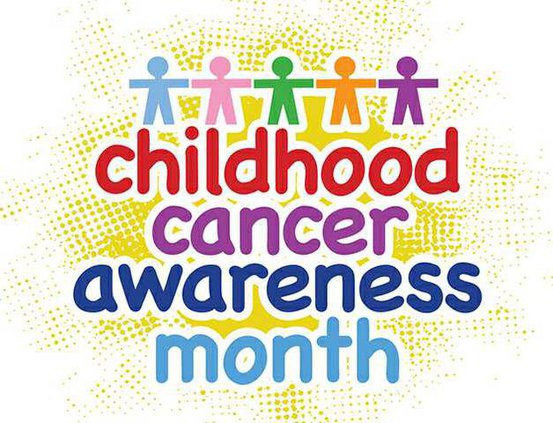Perhaps the most gut-wrenching thing parents can experience is learning their child has been diagnosed with cancer.
According to curesearch.com, each year, the parents of approximately 15,700 kids will receive the unfortunate news that their child has cancer. Every day, 43 children are diagnosed. Twelve percent of those diagnosed do not survive.
The average age of children diagnosed is 6, and more than 40,000 children undergo cancer treatment each year. Sixty percent of those who survive suffer later effects, such as infertility, heart failure or secondary cancer.
Childhood cancer remains the leading cause of death by disease among children in the United States.
According to the National Cancer Institute, the major types of cancers in children ages 0-14 are acute lymphocytic leukemia, brain and other central nervous system tumors, and neuroblastoma, which accounts for roughly 50 percent of new cases in 2015.
Leukemia is cancer of the blood cells, which mostly forms in the bone marrow. These cancerous blood cells crowd out the healthy blood cells. White blood cells, which are the ones that normally fight infection and aid the immune system, are the most common type of blood cell to become cancer, the institute reports. However, the oxygen- and platelet-carrying red blood cells may also become cancer.
The NCI reports that leukemia is the most common cancer in children younger than 15 but also occurs most often in adults older than 55.
Brain and central nervous system tumors typically begin when healthy cells in the brain or spinal cord change and grow uncontrollably, forming a mass, according to cancer.net. Tumors can be cancerous or benign. Cancerous tumors can grow and spread to other parts of the body while a benign tumor will grow but not spread.
These tumors may interfere with a child’s thought processes and movements. They are also difficult to treat because the tissue surrounding the tumor may be vital to the body’s functioning.
Neuroblastoma is the most common type of cancer found infants, according to kidshealth.org. This form of cancer typically grows in the area of the kidney and adrenal glands but can spread to other parts of the body. Neuroblastoma sometimes forms before a child is born, but it usually isn’t found until later, when the tumor begins to grow. When diagnosed in infancy, the chances of recovery are good. Children diagnosed with this type of cancer are usually younger than 5.
The horrifying truth is that the causes of most childhood cancers are unknown and, for the most part, cannot be prevented.
According to the American Cancer Society, some children have a higher chance of developing cancer if their family history includes a high percentage of cancer occurrences within the family genes. These children may require periodic checkups, which include cancer screening tests to look for the early signs of cancer.
The American Cancer Society reports that a child with leukemia may not have enough red blood cells, white blood cells or platelets, and these shortages show up on blood tests. Leukemia cells might invade other areas of the body, causing symptoms as well.
Symptoms from low red blood cell counts include tiredness, weakness, feeling cold, dizziness or feeling lightheaded, headaches, shortness of breath and pale skin.
Symptoms from low white blood cell counts include infections that don’t go away or are constantly reoccurring and fever.
A low platelet count can lead to easy bruising and bleeding, frequent or severe nosebleeds and bleeding gums. Other sign of leukemia to be mindful about include bone or joint pain, swelling of the abdomen, swollen lymph nodes and swelling of the face and arms.
Some of the symptoms to indicate a brain or central nervous system tumor include seizures or convulsions, unexplained persistent nausea and projectile vomiting, sleep apnea, vision problems, headaches, back pain, changes in the child’s personality, staring or repetitive automatic movements, weakness or clumsiness that gets progressively worse, early or delayed puberty or delayed or abnormal growth.
In infants, the only symptom may be that the head is growing too fast. Because an infant’s skull is soft, it is able to expand to make room for the growing tumor, so the baby may have a larger-than-expected head.
Kidshealth.org reports that the effects of neuroblastoma may vary widely depending on where the cancer first formed and whether it has spread to other areas of the body. In younger children, it is often discovered when a parent or doctor feels a lump or mass — most often in the abdominal area — though tumors can appear elsewhere in the body.
If the tumor is near the abdomen, a child might exhibit signs of a swollen stomach, have decreased appetite or experience abdominal pain.
If the neuroblastoma has spread to the bone, the child may experience bone and joint paint, black eyes, bruises and pale skin.
The American Cancer Society suggests that children have regular medical checkups, and parents should watch for unusual symptoms that don’t go away. Among the most common things to look for are:
• An unusual lump or swelling
• Loss of energy or unexplained paleness
• Easy bruising
• Ongoing pain in one area of the body
• Limping
• Frequent headaches accompanied by vomiting
• Sudden eye or vision changes
• Sudden weight loss.
September is Children's Cancer Awareness Month


Sign up for our e-newsletters